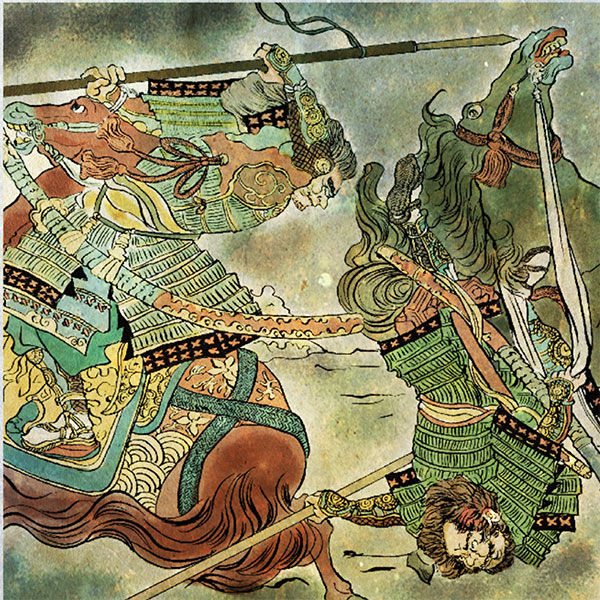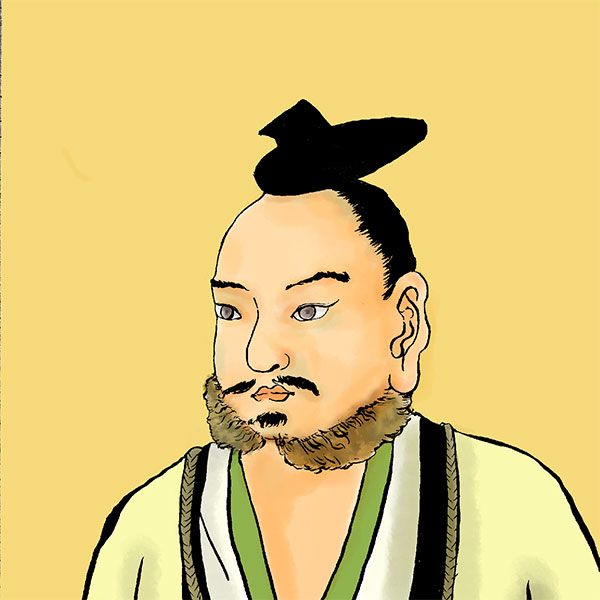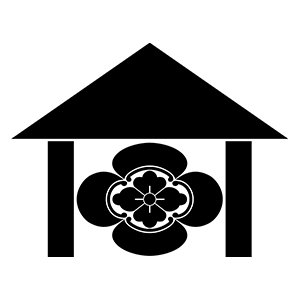- Obi DomainAs a result of a long dispute with the Shimazu clan, the land belonged to the Ito clan.
- The Obi domain was ruled by the Hyuga Ito clan for 14 generations throughout the Edo period. Obi Castle, the domain office, was the subject of a battle over ownership between the Shimazu and Ito clans for nearly 100 years from the end of the Muromachi period until Toyotomi Hideyoshi's conquest of Kyushu. One territory (castle) is this

Obi CastleNichinan City, Miyazaki Prefecture
- spring
- summer
- autumn
- winter
- TOP
- Kyushu
- Miyazaki prefecture
- Obi Castle
| Other name | Maizuru Castle |
|---|---|
| castle construction | Early Sengoku period |
| address | 10-chome, Obi, Nichinan City, Miyazaki Prefecture |
| telephone number | 0987-25-1905 |
| Opening hours | 9:30-17:00 (Admission until 16:30) |
| closing day | December 29th - December 31st |
| Admission fee | Adults 210 yen, University and high school students 150 yen, Elementary and junior high school students 100 yen |
- Access to Obi Castle
- 15 minutes walk from JR Obi Station
HISTORYObi Castle, one of the 48 castles of Ito
Obi Castle is a flat mountain castle built in Obi, Nichinan City, Miyazaki Prefecture. In the 15th century, this castle was the scene of a conflict between the Ito clan, which ruled central and northern Hyuga, and the Shimazu clan, who were plotting the unification of Kyushu. During the Edo period, it flourished as the domain office of the Ito clan's Obi domain. Let's unravel the history of Obi Castle.
- The beginning of Obi Castle
- Obi Castle is said to have its origins when the Tsuchimochi clan, which grew in power as a samurai group centered in northern Hyuga Province from the late Heian period to the early Sengoku period, built a fort during the Nanbokucho period. It is said that at this time, it was not called a castle but "Obiin". Therefore, the Tsuchimochi clan served as the lord of the castle for generations, but in 1484, when the Ito clan, which had ruled central and northern Hyuga, invaded Obi to expand its influence, the Shimazu clan, which aimed to unify Kyushu, entered Obi Castle and tried to stop the Ito clan's invasion. Obi Castle once fell into the hands of the Ito clan, but the following year, in 1485, Obi Castle was recaptured by the Shimazu clan. At this time, the head of the family, Yukuni Ito, was killed in battle. As a result, the Ito clan became more attached to Obi Castle, and the battle over Obi Castle began between the Shimazu clan and the Ito clan, which lasted for over 80 years.
- The battle over Obi Castle
- After Yukuni Ito was killed in battle, the Ito clan fell into a period of internal conflict between relatives fighting over the head of the family, and Yoshisuke Ito, the grandson of Yukuni Ito, was forced out of Hyuga, but his vassal Aratake Thanks to the efforts of Sansei and others, the rebellion was pacified and he regained control of the family. Yoshisuke Ito once became a monk, but his older brother who took over as head of the family suddenly passed away, so he returned to secular life and became the head of the family. He waged a long campaign, later known as the Obi campaign, over the interests of the Shimazu Toyoshu family, which ruled Obi, and the southern part of Hyuga. The shogunate was involved in the conflict, with Yoshiteru Ashikaga, the 13th shogun of the Muromachi shogunate, issuing a peace order, but neither Shimazu nor Ito took a step back, and the shogunate finally placed Obi under its direct control. give orders. However, Yoshisuke Ito ignored the orders and never stopped invading Obi. In 1568, during the 9th Battle of Obi, Yoshisuke Ito besieged Obi Castle, defended by Tadachika Shimazu, for about five months and achieved a great victory. Finally, he made peace with Takahisa Shimazu, the 15th head of the Shimazu family, and acquired the land of Obi. After a long battle, Yoshisuke Ito finally obtained Obi Castle and strengthened the defense of his territory by building castles and forts called the Ito 48 Castles. Obi Castle was also included.
Yoshisuke Ito obtained his long-awaited Obi and developed Sadowara, the Ito clan's stronghold, to the point where it became known as the ``Little Kyoto of Kyushu.'' However, Yoshisuke Ito's power declined after he suffered a crushing defeat against the Shimazu clan at the ``Battle of Kizakihara'' in Kyushu in 1572, also known as Okehazama. In this battle, Yoshisuke Ito was forced out of Obi, and the land once again belonged to the Shimazu clan. Yoshisuke Ito's third son, Yuhei Ito, relied on his blood ties to serve the Oda clan, and eventually became a supporter of Hideyoshi Hashiba. He played an active role in the Battle of Yamazaki in 1582, and after the Shimazu clan was expelled from Hyuga Province by Toyotomi Hideyoshi's pacification of Kyushu in 1587, he occupied former territories such as Kiyotake and Soi. He was restored and reinstated as a daimyo with 28,000 koku. The following year, he was given the territory of Obi, increasing his total to 38,000 koku. Thus, under the Toyotomi government, Obi officially became the territory of the Ito clan. Of course, Obi Castle also belonged to Mr. Ito. - Obi Castle in the Edo period
- At the Battle of Sekigahara, which took place in 1600, Ito Yuhei pretended to be on the side of the Western army and sent his eldest son, Ito Yukei, to side with the Eastern army. Therefore, after the Battle of Sekigahara, he was relieved of his territory and became the lord of the Obi domain. From then on, Obi Castle served as the domain office of the Obi domain and was the residence of the Ito family until the Meiji era. Although Obi Castle retains its medieval appearance, the second lord of the domain, Yukii Ito, put more effort into improving the castle town than the castle itself. After that, the castle was damaged by three earthquakes, starting with the Todokoro earthquake in 1662, so repairs were made with permission from the shogunate each time, and the stone walls were gradually built up. It is said that it was reborn as a modern castle.
- Obi Castle after the Meiji era
- In the Meiji era, most of the buildings at Obi Castle were demolished due to the castle abolition ordinance. However, in 1978, the Otemon Gate was restored, and in 1979, the castle lord's residence, Matsuo no Maru, was restored. In addition, Obi Sugibayashi, the site of the main enclosure, became the filming location for the TV drama series ``Wakaba'' in late 2004, and its popularity quickly rose. The Obi Castle History Museum is also located on the premises, making it one of Nichinan City's tourist attractions. In 2006, it was selected as one of Japan's 100 Famous Castles.
Read about incidents related to Obi Castle
- Kyushu pacificationHideyoshi defeated Shimazu and took control of Kyushu.
- Toyotomi Hideyoshi succeeded Oda Nobunaga and promoted the unification of Japan. Hideyoshi made his biggest rival, Tokugawa Ieyasu, a vassal after the Battle of Komaki and Nagakute in 1584, and in 1585 he defeated Motochika Chosokabe and conquered Shikoku.

Read biographies related to Obi Castle
- Yuhei ItoThe founder of the Ito clan
- During the Sengoku period, it was said in the Tokai region and on the plane that ``Moving to Kyoto and subduing the Kinai area was one indicator of the unification of Japan.'' Around the same time, a fierce battle was taking place in Kyushu. The Otomo clan and the Shimazu clan fought against each other, and at one point fell into decline.

History of the Obi clan, whose domain office is Obi Castle
| Domain office | Obi Castle |
|---|---|
| old area | Miyazaki District/Naka District, Hyuga Province |
| stone height | 57,000 koku |
| Fudai/Tozama | Foreigner |
| main lord | Ito family |
| Estimated population | 48,000 people (first year of the Meiji era) |














